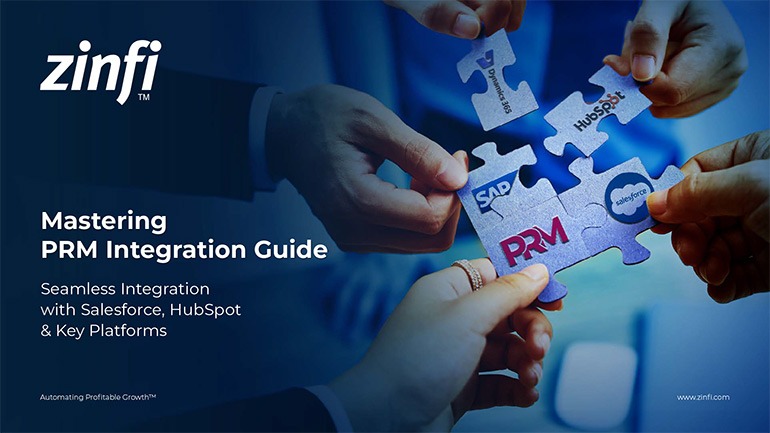Glossary - How to - Ecosystem Strategy
How to Develop an Effective Ecosystem Strategy?
Introduction
An ecosystem strategy is a structured approach businesses use to create, manage, and expand their network of partners, customers, and stakeholders. It is crucial in modern business models, particularly technology, healthcare, and manufacturing. A well-developed ecosystem strategy helps companies leverage collective strengths, drive innovation, and improve market positioning.
In Partner Relationship Management (PRM), an ecosystem strategy ensures seamless collaboration among channel partners, distributors, and resellers. Businesses can create a structured and scalable ecosystem, improving overall efficiency and revenue growth by automating partner management processes.
Key Takeaways:
Following these essential steps will help businesses develop a robust ecosystem strategy:
- Define your ecosystem by identifying key stakeholders and setting clear objectives.
- Utilize digital tools like PRM platforms and CRM systems to streamline ecosystem management.
- Foster collaboration through co-marketing initiatives, innovation incentives, and knowledge sharing.
- Monitor and optimize performance with KPIs and AI-driven analytics to ensure continuous improvement.
- Expand and scale your ecosystem by identifying new opportunities and standardizing processes.
Define Your Ecosystem and Objectives:
- Identify key players in your ecosystem, including partners, vendors, and customers.
- Establish clear business goals, such as expanding market reach or improving customer retention.
- Create a governance model to ensure alignment and compliance among ecosystem members.
Leverage Digital Tools for Ecosystem Management:
- Use PRM platforms to automate partner onboarding, training, and performance tracking.
- Integrate CRM, ERP, and marketing automation tools for streamlined operations.
- Ensure data transparency and seamless communication within the ecosystem.
Foster Collaboration and Innovation:
- Encourage knowledge sharing and joint ventures between partners.
- Provide incentives for partners to develop innovative solutions.
- Implement co-marketing and co-selling initiatives to drive mutual success.
Monitor and Optimize Performance:
- Set KPIs to measure the effectiveness of your ecosystem strategy.
- Conduct regular performance reviews and adjust strategies based on insights.
- Utilize AI-driven analytics to predict trends and optimize partner engagement.
Expand and Scale Your Ecosystem:
- Identify new market opportunities and potential partnerships.
- Standardize processes to ensure scalability.
- Continuously evolve your ecosystem strategy to adapt to changing market dynamics.
Summary of Key Takeaways:
Developing a robust ecosystem strategy involves defining key stakeholders, leveraging digital tools, fostering collaboration, monitoring performance, and scaling efficiently. By integrating PRM platforms, encouraging innovation, and utilizing AI-driven insights, businesses can optimize their ecosystems for long-term success. A strong ecosystem strategy drives efficiency, improves partnerships, and ensures sustainable growth across industries.
Key Examples:
- Automotive Manufacturing: Automotive manufacturers collaborate with suppliers, dealers, and technology providers to improve production efficiency and customer experience. Companies like Tesla and Ford leverage ecosystem strategies to foster innovation through partnerships with battery manufacturers, software developers, and logistics providers.
- Consumer Electronics: Brands like Apple and Samsung use ecosystem strategies to integrate software, hardware, and third-party services. Developer ecosystems enable third-party developers to create compatible applications, fostering better market penetration and customer satisfaction.
- Energy Production: Energy firms partner with technology providers and regulators to develop sustainable energy solutions. Companies like Tesla’s SolarCity and NextEra Energy leverage robust partner networks, including government agencies, smart grid technology firms, and environmental organizations.
- Financial Services: Banks and fintech companies collaborate to improve digital banking services and enhance security. Open banking APIs enable traditional financial institutions to integrate fintech innovations for seamless payment solutions and fraud detection.
- Food and Beverage: Food brands manage supply chains, partner with retailers, and ensure compliance with health regulations. Companies like Nestlé and Coca-Cola utilize IoT and blockchain technologies to enhance traceability and optimize inventory management.
- Healthcare Services: Healthcare providers collaborate with pharmaceutical companies, insurance firms, and technology providers to enhance patient care. Integrated electronic health records, telemedicine platforms, and AI-driven diagnostics improve treatment accessibility and efficiency.
- Information Technology: IT companies use ecosystem strategies to integrate third-party applications, enhance cloud services, and expand software solutions. Microsoft Azure, AWS, and Google Cloud foster developer ecosystems supporting startups and enterprises.
- Pharmaceutical Development: A pharmaceutical ecosystem includes researchers, regulatory bodies, and healthcare providers. Companies like Pfizer and Moderna leverage partnerships with biotech firms and research institutions to accelerate drug production and clinical trials.
- Retail Industry: Retailers collaborate with e-commerce platforms, logistics providers, and marketing firms to enhance omnichannel shopping experiences. Companies like Amazon and Walmart use data analytics and AI-driven personalization to optimize supply chains and customer engagement.
- Telecommunications: Telecom firms partner with device manufacturers, service providers, and content creators to expand connectivity and customer engagement. Companies like Verizon, AT&T, and T-Mobile invest in 5G technology and AI-driven network optimization.
Conclusion:
A strong ecosystem strategy enables businesses to define their network of partners, set clear objectives, and leverage digital tools for enhanced management. Companies can drive innovation and strengthen partner relationships by fostering collaboration, sharing knowledge, and implementing co-marketing initiatives. Regular performance monitoring through KPIs and AI-driven analytics ensures continuous improvement and optimization. Scaling the ecosystem requires identifying new opportunities and standardizing processes to maintain efficiency.
Across industries, from automotive manufacturing to telecommunications, an effective ecosystem strategy supports market expansion, operational efficiency, and long-term success. For businesses leveraging PRM, automation remains a critical factor in achieving seamless collaboration and scalability.
Associated Keywords:
- Ecosystem Management Strategy
- Partner Ecosystem Development
- Business Ecosystem Optimization















